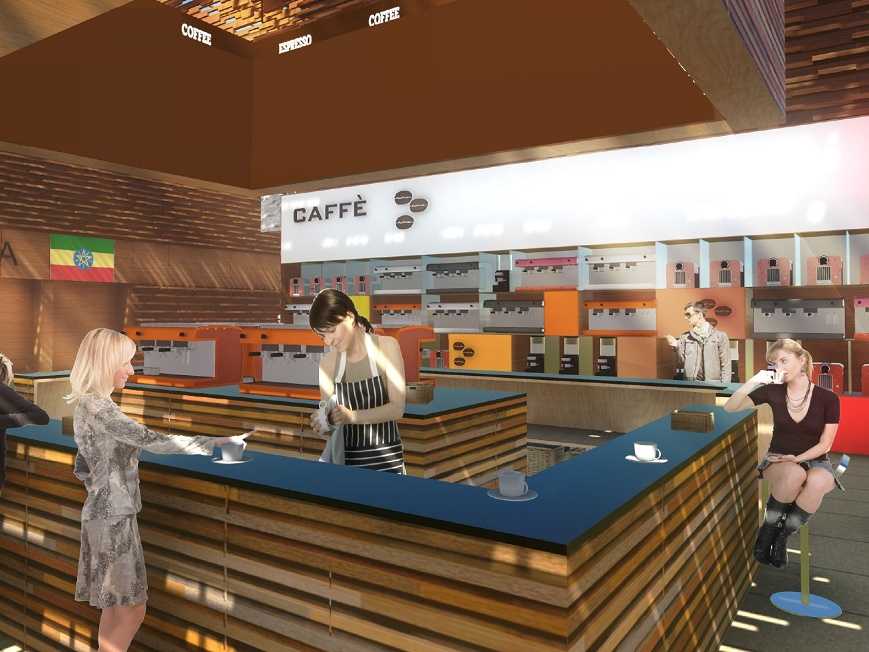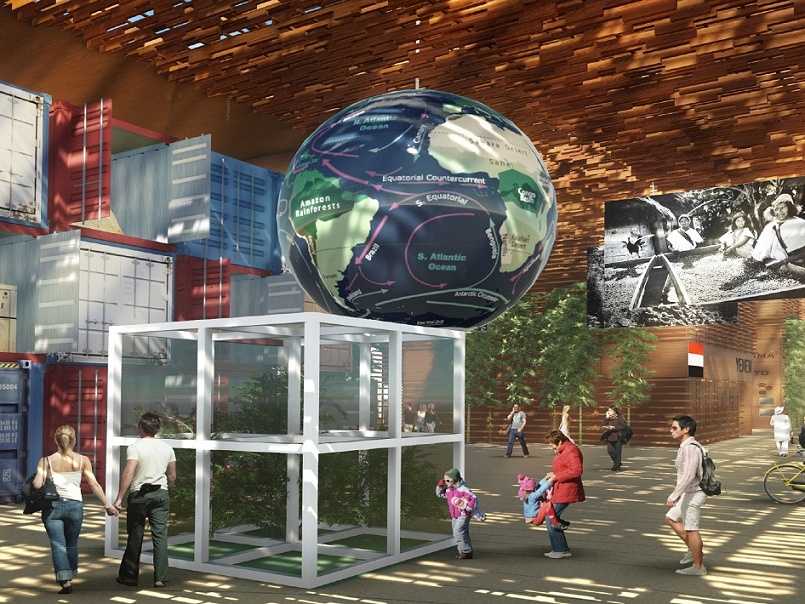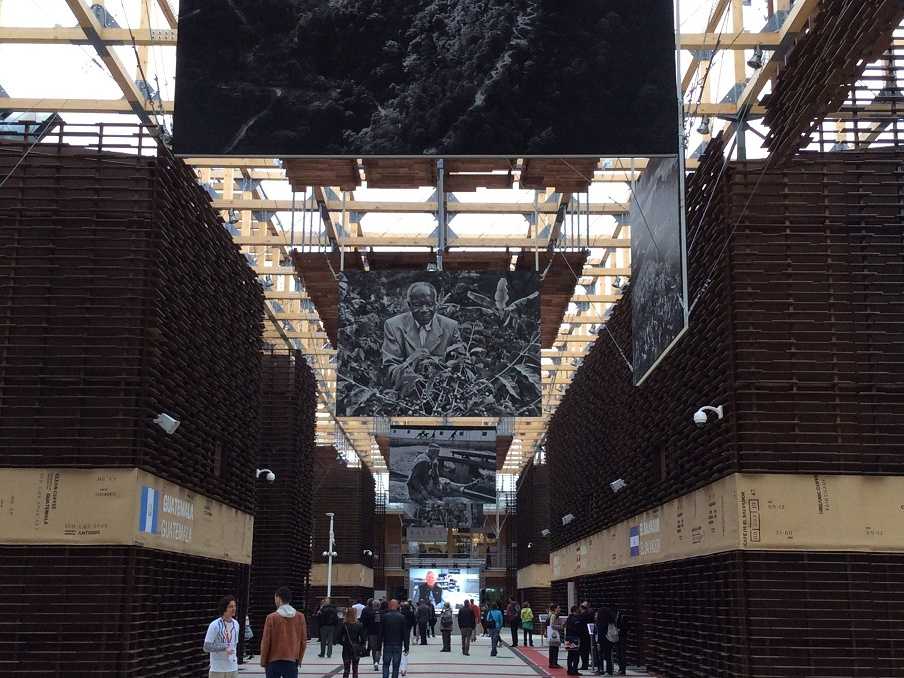A Visit to the Coffee Cluster at Expo Milano 2015 – Feeding the Planet, Energy for Life – is a journey into the world of coffee, a fragrant and delicious path from the plantation to the cup to find out where this fragrant drink comes from and to learn more about those who are behind its production.
Greenhouses and photographs provide a look inside the plantations
Visitors are welcomed by a collection of stunning images from Sebastião Salgado, the Brazilian photographer who lived in the atmosphere of the coffee plantation in the state of Minas Gerais.
There he captured the experiences, habits and expressions of those living in the world of coffee. But how was the coffee plant developed?
To understand more about the plant itself, visitors can tour the two greenhouses of the Cluster, one inside, one outside, and see Arabica coffee plants growing.
The Arabica are the most delicate of coffee plants. They reach up to 12 meters in height, however, on the plantation they are usually cut at just 2-3 meters. With a little luck, inside the Coffee Cluster, you can see the plants dotted with beautiful white flowers.
Salagado’s photo exhibit includes an image with a plantation in full bloom. Once the flowers wither, the fruits develop and in the greenhouse you can witness the green berries maturing into red fruit, known as drupes.

The roasting of coffee: the coffee in each country to touch and taste
Every day in the roasting area, coffees from the ten host countries of the Cluster are roasted. The green coffee beans are roasted, taking the form that we usually see.
In this area you have a full sensory experience: you can put your hand in a bag containing the green beans and note their fragrance, reminiscent of grass, and then put your hand in the bag containing the roasted coffee. Its scent is unmistakable, and a yearning for coffee becomes ever stronger.
Discover Coffee – Cluster guided tours and courses by the University of Coffee in Trieste
Every weekend courses from the University of Coffee in Trieste are held in the common area of the Cluster. Teachers share coffee recipes and tell the stories of the people behind this precious drink.
The courses are free, last about 30 minutes and take place from morning to afternoon, both in Italian and English.
Every day illycaffè offers visitors a tour of the Cluster , to discover the world of coffee: it’s free, it can be done with a tour operator, audio guide or with the Epson smart glasses that allow an augmented reality experience. You can join the tour with the “Epson Moverio ™ BT-200” viewer every day at the following times: from 12:00 to 12:30, from 15:00 to 15:30, from 17:30 to 18:00.
Tours with the more traditional guides are held at the following times: 13:45 to 14:30, 16:15 to 17:00, from 18:45 to 19:30.

Custom-made coffee just for you
At the end of the tour you can select from nine Arabic varieties, your own custom-blended coffee. Do you prefer something with a hint of chocolate? Caramelized? More bitter? A personal blend will be specially prepared according your tastes. What better way to wrap up the visit, but with a good cup of coffee, made just for you?
Countries and travels of coffee: faces, traditions and cultures
In the central area of the Cluster is a large globe, visible as you travel throughout the Cluster.
Also on display are coffee machines, from the oldest to the most modern including: Cimbali, Faema, E61 (named in honor of the solar eclipse of 1961), Cimbali Pythagoras (winner of the Compasso d’Oro), Gaggia, and the more modern machines, up to the Cimbali of 2012.
Also on display is the ” Illetta “, a machine from 1933 that still works and the first machine that made espresso cream. Espresso cream is an indicator as to if the coffee was done well or not. How? If the cream is light brown with streaks of dark brown, the espresso was made to perfection.
Entering the individual pavilions of the ten countries, you can learn more about how each nation grows its coffee along with cultural rituals linked to this beverage and the colors of the landscapes that give life to this precious resource.
You can try different types of coffee preparation, infusion or percolation, and can be carried to distant lands, among colors and flavors


















